This article was co-authored by Grace Imson, MA. Grace Imson is a math teacher with over 40 years of teaching experience. Grace is currently a math instructor at the City College of San Francisco and was previously in the Math Department at Saint Louis University. She has taught math at the elementary, middle, high school, and college levels. She has an MA in Education, specializing in Administration and Supervision from Saint Louis University.
There are 11 references cited in this article, which can be found at the bottom of the page.
This article has been viewed 199,681 times.
Slope intercept form is a common way to represent a linear equation. Slope intercept form is written in the form of [1] — where the letters are to be filled in or solved, such as: and values represent the and coordinates of a line, represents the slope, called "rate of change", the ratio ( = delta = change in), and represents the y-intercept (where the line crosses the y-axis). The beauty of slope-intercept or y = mx + b form is that it makes graphing a line very quick and easy. All you have to do is use its slope and y-intercept. If you want to know how to use slope intercept form, you've come to the right place.
Steps
Using Slope Intercept Form for Word Problems
-
1Read the problem. Before you can move forward, you need to carefully read the problem to understand what is being asked of you.
- Read the following problem: Your bank account increases linearly each week. If after 20 weeks of work, your bank account is at $560, while after 21 weeks of work it is at $585, find a way to express the relationship between how much money you've earned and how many weeks you've worked in slope-intercept form.
-
2Think of the problem in terms of slope-intercept form. Write . The multiplier or the coefficient of the x term, , represents the slope (change) and the or the constant terms represents the y-intercept which is the point where the line crosses the y-axis.[2]
- Notice that the problem states, "Your bank account increases linearly each week," meaning that you are saving the same amount of money each time, which means it will have a smooth slope. That "smooth," uniformly consistent savings plan makes it linear. If you don't save the same amount all the time, then it is not linear.
Advertisement -
3Find the slope of the line. To find the slope, you have to find the rate of change. This is . This symbol: is a Greek symbol named "Delta", which means change in.[3]
- If you started with $560 and now have $585 the next week, then you have earned $25 after 1 week of work. You can figure this out by subtracting $560 from $585. .
-
4Find the y-intercept. To find the y-intercept, or the in , you'll need to find the starting point of the problem (where it intersects the [vertical axis] y-axis. This means you need to know how much money you started with in your account.[4]
- If you had $560 after 20 weeks of work, and you know that you earn $25 after every week of work, then you can multiply 20 \times 25 to figure out how much money you earned in those 20 weeks. , which means that you earned $500 in those weeks.
- Since you have $560 after 20 weeks and have earned $500, you can figure out how much you started with by subtracting 500 from 560. 560 - 500 = 60.
- Therefore, .
-
5Write the equation in slope-intercept form. Now that you know the slope, , is 25, (25 dollars earned per 1 week), and the intercept, , is 60, you can plug them into the equation:[5]
- Substitute (slope) and (y-intercept) as follows:
-
6Test it out. In this equation, represents the amount of money earned, and represents the amount of weeks you've worked. Try plugging a different number of weeks into the equation to see how much money you've earned after a certain amount of weeks. Try two examples:
- How much money have you earned after 10 weeks? Substitute with in this equation to find out:
- . After 10 weeks, you've made $310. Notice how is the (manipulated/dependent variable).
- How many weeks would you have to work to earn 800 dollars? Plug "800" into the variable of the equation to get the value.
- . You can earn 800 dollars in almost 30 weeks.
- How much money have you earned after 10 weeks? Substitute with in this equation to find out:
Converting an Equation to Slope Intercept Form
-
1Write down the equation. Let's say you're working with the equation, 4y +3x = 16; write it down.[6]
-
2Isolate the y-term on one side of the equation. Just move the term over to the other side so that the y term is by itself. Remember that whenever you move a term (by adding or subtracting) to the other side of an equation, you have to flip its sign from negative to positive and vice versa. So, "3x" moved to the other side of the equation would become "-3x." The equation should now look like 4y = -3x +16 by doing this:[7]
- 4y + 3x = 16 =
- 4y + 3x - 3x = -3x +16 (by subtraction)
- 4y = -3x +16 (by rewriting, simplifying the subtraction)
- 4y + 3x = 16 =
-
3Divide all of the terms by the y coefficient. The y coefficient is the number in front of the y term. If there is no coefficient in front of the y term, then you're done. If there is a coefficient, however, then you should divide each term in the equation by that number. In this case, the y coefficient is 4, so you have to divide 4x, -3x, and 16 by 4 to get the final answer in slope intercept form. Here's how you do it:[8]
- 4y = -3x +16 =
- 4/4y = -3/4x +16/4 = (by division)
- y = -3/4x + 4 (by rewriting, simplifying the division)
-
4Identify the terms in the equation. If you're using the equation to plot a line, then you should know that "y" represents the y-coordinate, "-3/4" represents the slope, "x" represents the x coordinate, and "4" represents the y-intercept.
Writing an Equation in Slope-Intercept Form Given a Point and a Slope
-
1Write down the equation of a line in slope intercept form. First, simply write . You can fill the equation in once you have enough information. Let's say that you're trying to solve the following problem: Find the equation of a line that has a slope of 4 and passes through the point (-1, -6).[9]
-
2Plug in the given (or what you may call "known") information. Use what you know: that "m" is equal to the slope, which is 4, and that "y" and "x" represent the given "x" and "y" coordinates which are known, in this case. We have "x" = -1 and "y" = -6. "b" represents the y-intercept; you do not know b yet, so you can leave the "b" term in place.[10] Here's how the equation will look once you plug in the relevant information:
- y = -6, m = 4, x = -1 (the given values)
- y = mx + b (the formula)
- -6 = (4)(-1) + b (by substitution)
-
3Solve for the y-intercept. Now, simply do the math to find "b," the y-intercept. Just multiply 4 and -1 and then subtract the result from -6. Here's how you do it:[11]
- -6 = (4)(-1) + b
- -6 = -4 + b (by multiplying)
- -6 - (-4) = -4 -(-4) + b (by subtraction)
- -6 - (-4) = b (simplifying the right hand side)
- -2 = b (simplifying the left hand side)
-
4Write the equation. Now that you've solved for "b," you can fill in all of the necessary information and finish writing the line in slope intercept form. All you need to know is the slope and the y-intercept:
- m = 4, b = -2
- y = mx + b
- y = 4x -2 (by substitution)
Writing an Equation in Slope Intercept Form Given Two Points
-
1Write down the two points. Before you can write the equation of the line, you'll need to write down those two points. Let's say you're trying to solve the following problem: Find the equation of the line that passes through (-2, 4) and (1, 2). Write down the two points you're working with.[12]
-
2Use the two points to find the slope of the equation. The formula for finding the slope of a line that crosses two points is simply (Y2 - Y1) / (X2 - X1). You can think of the first set of coordinates (x, y) = (-2, 4), as representing X1 and Y1, and the second set of coordinates, (1, 2), as representing X2 and Y2. Here, you're really finding the difference between the x and the y coordinates, which gives you the rise over run, or the slope. Now, just plug them into the equation and solve for the slope.[13]
- (Y2 - Y1) / (X2 - X1) =
- (2 - 4)/(1 - -2) =
- -2/3 = m
- The slope of the line is -2/3.
-
3Pick one of the points to solve for the y-intercept. It doesn't matter which pair of points you choose; you can pick the one with smaller numbers or numbers that are easier to work with. Let's say you've chosen the points (1, 2). Now, just plug them into the equation "y = mx + b" where "m" represents the slope and "x" and "y" represent the x and y coordinates. Plug in the numbers and do the math to solve for "b." Here's how you do it:[14]
- y = 2, x, = 1, m = -2/3
- y = mx + b
- 2 = (-2/3)(1) + b
- 2 = -2/3 + b
- 2 - (-2/3) = b
- 2 + 2/3 = b, or b = 8/3
-
4Plug the numbers into the original equation. Now that you know that your slope is -2/3 and your y-intercept ("b") is 2 2/3, just plug them into the original equation for a line and you're done.
- y = mx + b
- y = -2/3x + 2 2/3
Graphing a Line From an Equation in Slope Intercept Form
-
1Write down the equation. First, write down the equation so you can start using it to graph a line. Let's say you're working with the following equation: y = 4x + 3. Write it down.
-
2
-
3Use the slope to find the coordinates of another point on the line. Since you know that the slope is represented by 4, or "m," you can think of the slope as representing 4/1, the rise over the run of the coordinates on the line. This means that every time the line moves up 4 points on the y axis, it moves to the right 1 point on the x axis. So, if you start at the point (0, 3) and go up ("rise") 4 points, you'll be at (0, 7). Then, you should move to the right ("run") one coordinate, so you get (1, 7) as another point on this line.[17]
- If your slope is negative, then you'll either have to move the y-coordinate up instead of down, or move the x-coordinate to the left instead of the right. You'll get the same result either way.
-
4Connect the two points. Now, all you have to do is draw a straight line through those two points and you'll have successfully graphed a line from an equation in slope intercept form. You can keep going -- just pick another point on the line you've drawn and use the slope to move up or down to find additional points on the line.
Finding the Slope Intercept Form Starting with the Point–Slope Form
-
1Use Point–Slope Form which is stated as: y - y1 = m(x - x1) . This is another way of working with one form of the equation of the line to get another form.[18]
-
2Take the one point given and the slope m given to us (known) to work with, for example: point (4, -3) and slope m = -2 .[19]
- You are working where m = -2 as the slope of a line and the coordinates of a point are (4, -3), and these are our (x1,y1) like any defined point on the line. So, using those given values we have:
y - y1 = m(x - x1),
y - (-3) = -2(x - 4), by substitution using the point and slope
y + 3 = -2(x - 4), by simplifying -(-3) to + 3
y + 3 = -2x + -2(-4), by distribution
y + 3 = -2x + 8, by multiplying
y + 3 - 3 = -2x + 8 - 3, by subtraction (of equals from both sides of the equation)
y = -2x + 5, by simplifying/rewriting it (That fits the y = mx + b called the Slope Intercept Form). - What is Point–-slope form based on? The point-slope form expresses the fact that the difference of y values for two points on one line (that is, y − y1) can be stated as directly proportional to the difference of x values (that is, x − x1). There is a proportionality constant called m (the slope of the line).
- We find that Direct Proportion is a comparison that can be stated in a form similar to y = kx. Here we notice that y - y1 = m(x - x1) fits the form y = kx .
- Direct proportion means that given two variables such as x and y, then y is called directly proportional to x, if there is a constant k such that y = kx, if and only if x is not zero. "k" is the proportionality constant which is just the slope as we are using it. (You can also express direct proportion by saying "x and y vary directly", or express that "x and y are in direct variation").
- You are working where m = -2 as the slope of a line and the coordinates of a point are (4, -3), and these are our (x1,y1) like any defined point on the line. So, using those given values we have:
Expert Q&A
Did you know you can get expert answers for this article?
Unlock expert answers by supporting wikiHow
-
QuestionHow do you find the y-intercept when you are given two plot points?
 Grace Imson, MAGrace Imson is a math teacher with over 40 years of teaching experience. Grace is currently a math instructor at the City College of San Francisco and was previously in the Math Department at Saint Louis University. She has taught math at the elementary, middle, high school, and college levels. She has an MA in Education, specializing in Administration and Supervision from Saint Louis University.
Grace Imson, MAGrace Imson is a math teacher with over 40 years of teaching experience. Grace is currently a math instructor at the City College of San Francisco and was previously in the Math Department at Saint Louis University. She has taught math at the elementary, middle, high school, and college levels. She has an MA in Education, specializing in Administration and Supervision from Saint Louis University.
Math Instructor, City College of San Francisco
-
QuestionCan the y = mx + b formula be reversed to solve for x? If so, how?
 DonaganTop AnswererSubtract b from both sides, then divide both sides by m. x = (y - b) / m.
DonaganTop AnswererSubtract b from both sides, then divide both sides by m. x = (y - b) / m.
References
- ↑ https://www.khanacademy.org/math/algebra/x2f8bb11595b61c86:forms-of-linear-equations/x2f8bb11595b61c86:intro-to-slope-intercept-form/a/introduction-to-slope-intercept-form
- ↑ Grace Imson, MA. Math Instructor, City College of San Francisco. Expert Interview. 1 November 2019.
- ↑ https://www.mathwarehouse.com/algebra/linear_equation/slope-of-a-line.php
- ↑ https://www.mathplanet.com/education/algebra-1/visualizing-linear-functions/the-slope-intercept-form-of-a-linear-equation
- ↑ https://www.mathplanet.com/education/algebra-1/visualizing-linear-functions/the-slope-intercept-form-of-a-linear-equation
- ↑ https://content.byui.edu/file/b8b83119-9acc-4a7b-bc84-efacf9043998/1/Math-2-11-1.html
- ↑ https://content.byui.edu/file/b8b83119-9acc-4a7b-bc84-efacf9043998/1/Math-2-11-1.html
- ↑ http://www.mathsisfun.com/equation_of_line.html
- ↑ http://www.purplemath.com/modules/strtlneq.htm
- ↑ Grace Imson, MA. Math Instructor, City College of San Francisco. Expert Interview. 1 November 2019.
- ↑ https://virtualnerd.com/algebra-1/linear-equation-analysis/point-slope-standard-form/standard-form-examples/standard-to-slope-intercept-and-point-slope-form
- ↑ http://www.purplemath.com/modules/strtlneq.htm
- ↑ https://www.youtube.com/watch?v=LtpXvUCrgrM
- ↑ https://www.youtube.com/watch?v=LtpXvUCrgrM
- ↑ Grace Imson, MA. Math Instructor, City College of San Francisco. Expert Interview. 1 November 2019.
- ↑ https://www.youtube.com/watch?v=kgD48XXVT1c
- ↑ https://www.youtube.com/watch?v=kgD48XXVT1c
- ↑ https://www.youtube.com/watch?v=eHPTyYbNmx4
- ↑ https://www.youtube.com/watch?v=eHPTyYbNmx4







-Step-1-Version-3.webp)
-Step-2-Version-3.webp)

-Step-3-Version-3.webp)

-Step-4-Version-3.webp)


-Step-5-Version-3.webp)

-Step-6-Version-3.webp)









-Step-7-Version-3.webp)
-Step-8-Version-2.webp)
-Step-9-Version-2.webp)
-Step-10-Version-2.webp)
-Step-11-Version-2.webp)
-Step-12-Version-2.webp)
-Step-13-Version-2.webp)
-Step-14-Version-2.webp)
-Step-15-Version-2.webp)
-Step-16-Version-2.webp)
-Step-17-Version-2.webp)
-Step-18-Version-2.webp)
-Step-19-Version-2.webp)
-Step-20-Version-2.webp)
-Step-21-Version-2.webp)
-Step-22-Version-2.webp)
-Step-23-Version-2.webp)
-Step-24-Version-2.webp)
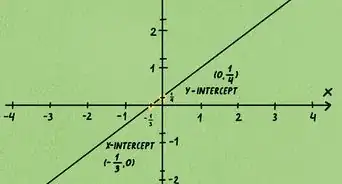
-Step-13.webp)
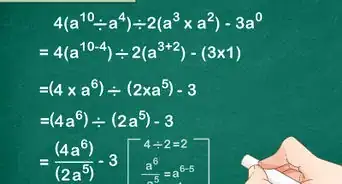

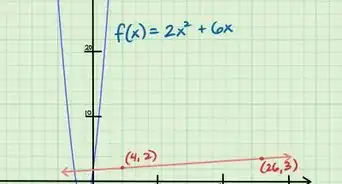

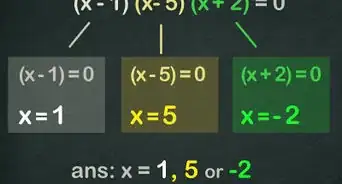

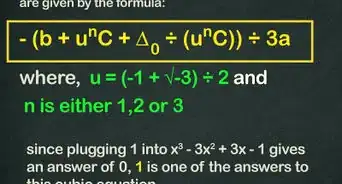

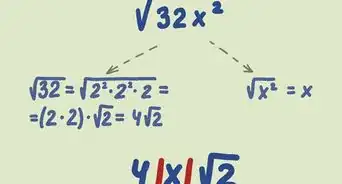
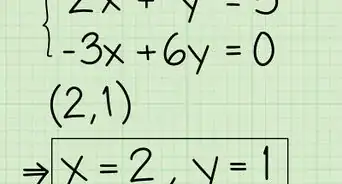










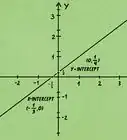
-Step-13.webp)




































